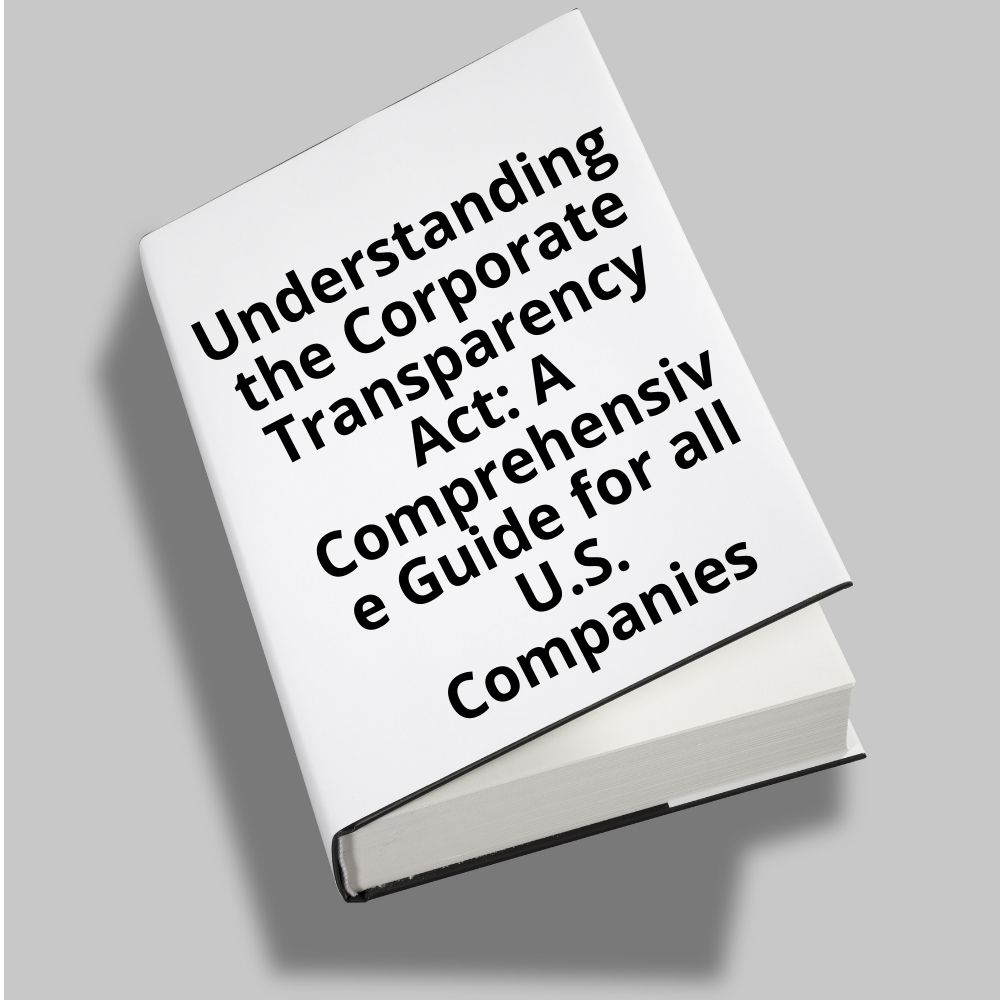
The FinCEN Corporate Transparency Act (CTA) marks a significant shift in the regulatory landscape for private companies in the United States. Implemented to combat financial crimes and enhance corporate transparency, it introduces new reporting requirements for beneficial ownership. It is crucial to take a closer look at the CTA and provide clarity on its requirements, compliance strategies, and potential penalties for non-compliance. Understanding these aspects is crucial for businesses to align with federal regulations and avoid legal repercussions.
Introduction to the Corporate Transparency Act (CTA)
The Corporate Transparency Act passed as part of the Anti-Money Laundering Act of 2020, aims to prevent illicit activities by enhancing the transparency of corporate structures. It requires specific reporting of beneficial ownership information to the Financial Crimes Enforcement Network (FinCEN). This legislation targets private companies, particularly small corporations and LLCs, which have been susceptible to misuse for illicit activities due to their opaque ownership structures. The Act is a response to growing concerns over money laundering, terrorism financing, and other financial crimes facilitated through anonymous entities.
Under the CTA, beneficial owners are defined as individuals who own or exercise significant control over a substantial portion of the entity. The primary objective is to create a more transparent business environment where the true ownership of companies is clearly disclosed.
Reporting Requirements for Existing and Newly Formed Entities
The Corporate Transparency Act (CTA) introduces specific reporting requirements for entities, differentiated by their formation date and structure. For companies in existence before January 1, 2024, there is a grace period until the end of 2024 to comply with these requirements. However, entities formed after January 1, 2024, must report their beneficial ownership information to FinCEN within 90 days of their formation. In addition, all entities are obligated to update their reports within 30 days of any change in beneficial ownership information.
The CTA’s reporting requirements apply to both corporations and LLCs, including single-member LLCs. However, there are exemptions for certain types of entities. Exempt entities typically include those already heavily regulated and transparent by nature, such as banks, credit unions, government entities, depository institution holding companies, securities exchanges, certain insurance companies, and entities registered with the Securities and Exchange Commission (SEC).
In addition, Large businesses employing over 20 individuals and generating yearly revenues exceeding $5 million could also be exempt. Inactive or dormant companies that do not possess any assets and have neither disbursed nor received funds exceeding $1,000, either directly or indirectly could also be exempt. It’s essential for businesses to review the CTA criteria carefully or consult with experts to determine their specific reporting obligations.
How to File your FINCEN Reports
- Review Existing Structures: Examine your company’s current ownership and control structure to identify who qualifies as a beneficial owner under the CTA. Ensure that all information is up-to-date and accurately reflects the current state of the business.
- Gather Required Information: Collect necessary details such as names, addresses, and identification numbers for each beneficial owner. This information will be vital for the FinCEN reporting process.
- Develop Internal Protocols: Establish internal procedures for regularly updating beneficial ownership information. This step is crucial for maintaining compliance, especially in light of changes in ownership or control.
- Educate Key Personnel: Ensure senior executives and stakeholders know the CTA requirements. Conduct training sessions to familiarize them with their responsibilities under the Act if necessary.
- Plan for Reporting: File the FinCEN’s Beneficial Ownership Information (BOI) reporting forms. The actual filing process involves registering on the FinCEN portal, known as the BOI E-Filing System. Once registered, you can access and complete the required forms electronically. These forms will ask for the information you have gathered about your beneficial owners. It’s important to submit the initial report timely and accurately, following any specific instructions provided by FinCEN.
- Stay Informed About Updates: Stay up-to-date on any changes from FinCEN regarding the submission process. Any changes in beneficial ownership information must be reported to FinCEN within 30 days of the change, using the same electronic filing process.
Clarifying Beneficial Ownership: Criteria and Identification
The CTA defines a beneficial owner as an individual who either owns at least 25% of the equity interests in the entity or exercises substantial control over it. This definition aims to uncover the real individuals behind corporate entities, moving away from opaque ownership structures. The process of identifying beneficial owners may require a thorough review of the company’s ownership and control structures. This includes examining share registers, voting rights, and any other agreements that confer control or economic benefits.
Penalties for Non-Compliance: Understanding the Risks
Non-compliance with the CTA can result in both civil and criminal penalties. Civil penalties include substantial fines, which can accrue for each day the violation continues. This emphasizes the importance of timely and accurate reporting under the Act.
The Act also prescribes criminal penalties for failing to report or provide false or fraudulent information. These penalties can include fines and imprisonment. The stringent penalty structure under the CTA underscores the federal government’s commitment to combating financial crimes and enhancing corporate transparency. Companies must therefore take their reporting obligations under the CTA seriously to avoid these severe consequences.



